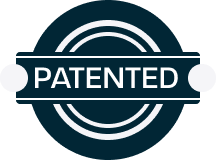On 22 December 2021 the European Commission presented the proposal for a Council Directive no. COM(2021) 565 final laying down rules to prevent the misuse of shell entities in order to obtain tax advantages within the EU (the “Directive”). The proposed measures envisage a seven-step analysis that is intended to be a serious deterrent against the use for tax purposes of entities without substance in cross-border situations.
Once adopted, the Directive should come into effect as of 1 January 2024. However, as the qualification of “Shell entity” will be determined by looking back at the two previous tax years (i.e., 2022 and 2023), an immediate action on revisiting the actual investment structures to avoid tax costs and reputational issues is needed.
Entities in scope
The Directive is broadly inclusive and captures all i) undertakings engaged in an “economic activity, regardless of their legal form” that ii) are considered tax resident in a Member State and iii) are eligible to receive a tax residency certificate in such Member State.
It should instead fall out of the scope of the Directive the entities resident outside the EU and, in particular, in the European Economic Area; entities not engaged in business activities like charities, foundations, trusts; non-commercial partnerships; partnerships regarded as transparent for tax purposes but not entitled to treaty protection, and Excluded Entities as declined later in the text.
Seven-step analysis
Step 1 defines whether the undertakings in scope are “at risk” to be presumed to be “Shell entities”. To this end, there are three main gateways that should be crossed simultaneously:
a) more than 75% of the revenues accruing to the undertaking in the preceding two tax years is “relevant income” as defined by Article 4 of the Directive (e.g., interest, royalties, dividends and income from the disposal of shares, income from movable or immovable properties, income from financial activities). In any case, this first gateway is considered crossed even in the absence of relevant income in any of the preceding two tax years i) if more than 75% of the book value of the undertaking’s assets consists of immovable property or movable property held for private purposes with a book value of more than one million euro, or ii) if more than 75% of the book value of the undertaking’s assets consists of shares;
b) such activities are mainly cross-border: either i) more than 60% of the book value of certain undertaking’s assets are located outside the Member State of the undertaking in the preceding two tax years (the “Asset test”), or alternatively, ii) at least 60% of the undertaking’s relevant income is earned or paid out via cross-border transactions (the “Income test”). There is no reference in the Directive to situations involving cases of the undertaking’s transfer of residence; in such cases, the Asset test should be reasonably carried out looking separately at each year. As to the Income test, the meaning of “cross-border transactions” should be better declined;
c) the undertaking outsourced the administration of day-to-day operations and the decision-making on significant functions in the preceding two tax years. It is a very factual test for which some sort of guidance should be found in the principles laid down in the third indicator under Step 2 concerning the qualified personnel.
Step 1 also requires checking if the undertakings fall out of the scope of the Directive as they are considered to be at low risk (the “Excluded Entities”). This is either because normally they have adequate substance or because they do not give rise to tax benefits and in substance “are commonly used for good commercial reasons”. The following Excluded Entities are not obliged to proceed with the next step analysis and they are not subject to the reporting obligations:
a) companies which have a transferable Security (e.g., bonds) admitted to trading or listed on a regulated market or multilateral trading facility as defined under Directive 2014/65/EU of the European Parliament and of the Council;
b) regulated financial undertakings (such as banks, insurance and reinsurance companies, asset managers, investment funds like UCITS or alternative investment funds – AIFs – and EU securitisation companies);
c) undertakings that have the main activity of holding shares in operational businesses in the same Member State while their beneficial owners are also resident for tax purposes in the same Member State;
d) undertakings with holding activities that are resident for tax purposes in the same Member State as the undertaking’s shareholder(s) or the ultimate parent entity, as defined in Section I, point 7, of Annex III to Directive 2011/16/EU;
e) undertakings with at least five own full-time equivalent employees or members of staff exclusively carrying out the activities generating the relevant income.
It is important to point out that an entity 100% owned by an Excluded Entity is not itself an Excluded Entity. For instance, a special purpose vehicle owned by an investment fund sub letter b) is not carved-out by the Directive, even though logically it should be considered at low risk anyway.
Step 2 requires the undertakings presumed to be “at risk” (as identified by Step 1) to comply with specific reporting obligations which consist of declaring each year in their tax returns (and providing documentation in support of) whether they meet all the three following indicators of minimum substance (the “Substance test”):
a) the undertaking has in the Member State own premises or premises for its exclusive use. The notion of “own premises” would also need to be better defined especially since there is no indication as minimum size or equipment;
b) one or more own active bank accounts in the Union, and not just in the Member State of claimed residence. Having a bank account outside the EU, such as Switzerland, UK or the US should not be enough (although it may be relevant for the rebuttal of the presumption as for Step 4);
c) one of the following indicators:
(i) one or more directors:
1) are resident for tax purposes in the Member State of the undertaking (or at no greater distance from such Member State);
2) are qualified and authorised to take decisions in relation to the activities that generate relevant income or in relation to the undertaking’s assets;
3) actively and independently use the authorisation on a regular basis;
4) are not employees of an enterprise that is not an associated enterprise and do not perform the function of director or equivalent for other enterprises that are not associated enterprises. This latter requirement is quite problematic, for instance, for entities which do not either employ their own directors nor recur to the ones of other associated companies, but to directors with multiple mandates from companies of different groups which are not related to the undertaking under analysis. On the contrary, it should not be problematic the case where a company employs directors who are also directors of group companies;
(ii) the majority of the full-time equivalent employees are resident for tax purposes in the Member State of the undertaking or at no greater distance from that Member State and are qualified to carry out the activities that generate relevant income. This should be the case of undertakings with less than five employees dedicated to the relevant income generating activities, because otherwise the automatic carve-out should apply (provided that they are resident in the Member State of claimed residence of the undertaking or at no greater distance from that Member State). So, it is not clear how many employees the undertaking should have in order to meet such test.
In regard to the timing of the reporting obligations, no further guidance is giving to whether the annual tax return is related to the first year after the two-year reference period or to the last year of such reference period.
Step 3 requires the undertaking to carefully self-asses the information reported under Step 2. As mentioned before, if the Substance test is met, the undertaking is presumed to have minimum substance otherwise failing to meet even only one of such indicators or to provide the satisfactory evidence implies that the undertaking is presumed not to have minimum substance.
Step 4 gives the undertaking the opportunity to rebut the presumption of not having minimum substance under Step 3 by demonstrating with additional supporting evidence that it carries out a genuine economic activity and it is not a “Shell entity”. In this regard, what stands out is that no advance actions are provided for the undertakings by the Directive but the presumption can be literally sought once the undertaking has already failed the Substance test and thus presumed not to have minimum substance. Reasonably, in order to get the rebuttal, the additional supporting evidence requested by Article 9, paragraph 2 of the Directive (i.e., documents on the commercial rationale behind the establishment of the undertaking, the employee profiles and the place where the decision-making concerning the activity generating the relevant income is taken) should relate also to previous years, even beyond the two-year reference period. The rebuttal can be effective for the relevant year and for the subsequent five years, on the condition that the factual and legal circumstances of the undertaking remain unchanged during this period. If in such five-year period the undertaking transfers the residence to another Member State, such latter Member State may require the process to start again but one should expect that due weight will be given to the information provided to the departing Member State and to the final judgment of its tax authorities.
Step 5 gives the undertaking the opportunity to request an exemption from reporting obligations by proving that the “existence of the undertaking does not reduce the tax liability of its beneficial owner(s) or of the group as a whole of which the undertaking is a member” (the “Exemption”). The Exemption requires the undertaking to provide information about the structure of the group and its activities, and a comparison of the amount of the overall tax due by the beneficial owner(s) of the group as a whole, having regard to the interposition of the undertaking, with the amount that would be due under the same circumstances in the absence of the undertaking. The Exemption can be effective for the relevant year, at the end of which it may be renewed for the subsequent five years, on the condition that the factual and legal circumstances of the undertaking remain unchanged during this period.
Step 6 envisages tax consequences at different levels for those investment structures involving “Shell entities” which does not have the minimum substance as described in Step 2, does not rebut the presumption under Step 4 or does not get the Exemption under Step 5. What it is important to consider is that the same tax consequences apply whenever there is a chain of shell companies.
At the level of the Member State of claimed tax residence, such Member State shall tax income generated by the undertaking and subject to withholding taxes payments made by the undertaking under ordinary rules, including those set forth by EU Directives and tax treaties. Vis-à-vis foreign States, such Member State, however, has the obligation under Article 12 of the Directive to a) deny a request for a certificate of tax residence, or alternatively, b) grant a certificate of tax residence which prescribes that the undertaking is not entitled to the benefits of treaties and Directives.
At the level of Member States of source, benefits provided by EU treaties and the EU Directives to payments made to the undertaking will be denied. Few different combinations can be envisaged:
1) the Source State is a Member State and the undertaking’s shareholder(s) is tax resident outside the EU: such Source State shall apply the withholding taxes under its national law or any agreement or convention in force with the third country jurisdiction of the undertaking’s shareholder(s). In this latter respect, this requires to consider the undertaking’s shareholder(s) as the direct owners of the relevant income generating assets but such provision should be coordinated with other provisions regarding treaty entitlement;
2) the Source State is a non-EU Member State: such Source State is not subject to the obligations under the Directive but it should reasonably deny treaty benefits lacking a certificate of tax residence granted by the Member State of the “Shell entity”. Depending on the domestic tax laws of such non-EU Source State, payments flowing to the undertaking’s shareholder(s) could anyways be subject to the application of treaty withholdings;
3) the Source State is a Member State and the undertaking’s shareholder(s) is tax resident in another Member State: such Source State must consider the payment as directly flowing to the undertaking’s shareholder(s) for the purpose of domestic legislation, tax treaties but also EU Directives. In this latter respect, this requires to consider the undertaking’s shareholder(s) as the direct owners of the relevant income generating assets;
4) the Source State is a Member State and the undertaking’s shareholder(s) is tax resident in the same Member State: domestic laws should apply as if the payments were not flowing through the undertaking qualifying as “Shell entity”.
At the level of the Member State of residence of the undertaking shareholder(s), such Member State must deny the application of any provisions for the elimination of the double taxation provided by EU Directives or tax treaties with respect to relevant income flowing from the undertaking. Nevertheless, the Directive does not preclude the application of national laws having similar effects. If both the undertaking’s shareholder(s) and the payer are resident for tax purposes in a Member State, the Member State of the undertaking’s shareholder(s) shall tax the relevant income of the undertaking as if it had been received by the shareholder(s) directly. A credit shall be granted also for taxes due in the Member State of the undertaking. The same rule applies if the payer is resident outside the EU.
Step 7 provides that Member States of the undertaking is obliged to an automatic exchange of information with all other Member States in the following situations: the undertaking has no substance; it has either or not rebutted the presumption; it has either or not obtained the Exemption, or it has been audited and the conclusion is that the undertaking does not meet the Substance test.
Step 7 also requires Member State to provide effective, proportionate and dissuasive penalties in case of infringements of national provisions adopted pursuant to the Directive. The amount of such penalties should not be lower than a minimum amount, determined as 5% of the undertaking’s turnover in the relevant tax year. Nevertheless, some doubts might arise in the terms of items of income included in the definition of “turnover”, as no further details are provided by the Directive.
Entry into force
As previously mentioned, the Directive should apply from 1 January 2024 thus requiring some immediate careful considerations on the existing investment structures. While the Directive addresses the situation within the EU, with a Press Release the European Commission has anticipated that “in 2022 the Commission will undertake a new initiative to tackle non-EU shell companies”. This is a very welcome statement but implicitly confirms that the Directive on a stand-alone basis may give rise to collateral effects such as undermining company structures which are based in the EU only and not the ones with potential shell companies artificially located outside the EU.







